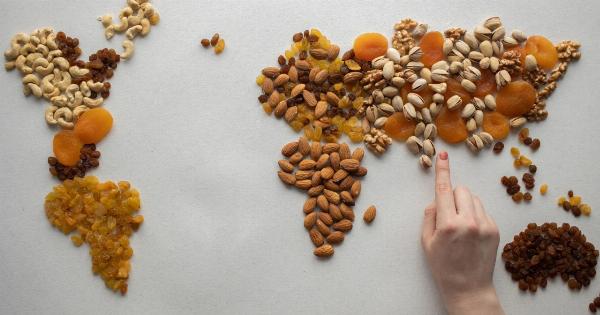Love, a feeling so captivating and yet so mysterious, has always intrigued scientists and philosophers alike.
What causes two individuals to fall head over heels for each other? Is love purely a result of chemical reactions in the brain or is there something more to it? In this article, we will explore the unexpected science behind falling in love and uncover some fascinating insights into this universal human experience.
The Role of Chemistry
At the very core of falling in love lies the chemical reactions in our brains. When we encounter someone who piques our interest, the brain releases a surge of chemicals including dopamine, oxytocin, and serotonin.
Dopamine, often referred to as the “pleasure chemical,” is responsible for creating feelings of euphoria and excitement, making us feel on top of the world when we’re with our beloved.
Oxytocin, on the other hand, is often dubbed the “love hormone” or “cuddle chemical.” It plays a significant role in bonding and trust-building, enhancing emotional intimacy and connection between two individuals.
Increased levels of oxytocin are associated with feelings of contentment, security, and attachment.
Serotonin, a neurotransmitter responsible for regulating mood, also plays a part in falling in love. When we are infatuated, serotonin levels drop, leading to obsessive thoughts and a longing for the other person’s presence.
Love at First Sight
Many of us have heard stories of people falling in love at first sight. But is it just a romantic notion, or is there any scientific basis to it?.
Research indicates that love at first sight may be attributed to the brain’s ability to make quick judgments.
Within seconds of seeing someone, our brain assesses various facial features, body language, and other non-verbal cues to form an initial impression. These rapid evaluations are made in the amygdala, the brain’s emotional center, triggering an instant feeling of attraction or interest.
While love at first sight may seem like an extraordinary phenomenon, it may simply be the brain’s way of quickly identifying potential mates based on physical and behavioral traits.
The Role of Similarity
It is often said that “opposites attract,” but research suggests otherwise. In reality, we tend to be attracted to individuals who share similar traits, values, and interests. This phenomenon is known as assortative mating.
Studies have found that similarities in physical attractiveness, educational background, and even political beliefs play a significant role in the initial stages of falling in love.
This similarity creates a sense of familiarity and comfort, allowing individuals to connect on a deeper level.
The Power of Pheromones
Pheromones, chemical substances that are secreted and detected by animals to influence behavior, also play a role in human attraction.
While the existence and impact of human pheromones are still debated, studies suggest that these subtle chemical signals may influence our feelings of attraction and desire.
Body odor, influenced by genetic and immunological factors, can act as a form of biological compatibility test.
Research has shown that individuals are more attracted to the natural body odor of those with different immune system genes, pointing towards the evolutionary advantage of combining genetic diversity.
The Role of Attachment Styles
Attachment styles, based on early caregiver relationships, can significantly influence the way we experience love and form relationships in adulthood. Psychologists have identified three main attachment styles: secure, anxious, and avoidant.
Individuals with a secure attachment style tend to have a positive view of themselves and others, comfortably relying on their partners and developing long-lasting, trusting relationships.
Those with an anxious attachment style often have a fear of abandonment and seek constant reassurance. On the other hand, individuals with an avoidant attachment style may feel uncomfortable with closeness and have difficulties trusting others.
Understanding our attachment style can help us navigate relationships and identify any challenges or patterns that may arise in the realm of love.
The Role of the Brain
Falling in love not only affects our emotions but also impacts the brain’s structure and function.
Neuroimaging studies have shown that individuals in love exhibit increased activity in areas associated with reward, pleasure, and motivation, such as the prefrontal cortex, ventral tegmental area, and nucleus accumbens.
The brain’s reward system releases chemicals that create a sense of euphoria and fuel our desire to be with our loved one.
Additionally, the prefrontal cortex, responsible for decision-making and rational thinking, becomes less active, potentially explaining the feeling of being “love-struck” or losing one’s ability to think logically when deeply infatuated.
Love and Longevity
The benefits of falling in love extend beyond the emotional realm. Research suggests that being in a loving, committed relationship can have positive effects on our physical health and longevity.
Studies have shown that individuals in long-term, loving relationships have lower blood pressure, reduced stress levels, and a decreased risk of cardiovascular diseases.
The emotional support provided by a partner can also lead to improved mental well-being and stronger immune function.
The Evolutionary Function of Love
The evolutionary significance of falling in love lies in its role in reproduction and the survival of the species. Love and mating are intricately linked, as they ensure the continuation of our genes through the creation of offspring.
From an evolutionary perspective, love serves as a powerful motivator to form and maintain relationships, ensuring the care and protection of offspring.
The bond between parents contributes to the survival and healthy development of the next generation, which is crucial for the survival of any species.
Conclusion
Falling in love is a multi-faceted experience that involves a complex interplay of chemicals, emotions, and evolutionary biology.
From the initial rush of attraction to the deep emotional connection that forms over time, love remains one of life’s greatest mysteries.
While science has unraveled some of the secrets behind falling in love, there is still much more to discover. The unexpected science of falling in love continues to captivate researchers, offering new insights into this timeless human experience.




























